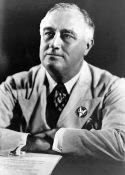
Bradford Vivian, Public Forgetting: The Rhetoric and Politics of Beginning Again (University Park: Penn State University Press, 2010).
from the press:
“In his sustained meditation on forgetting, Bradford Vivian makes a singular and extremely valuable contribution to the field of memory studies. He substantially advances the theoretical discussion of memory and forgetting with his extended critiques (rhetorical analyses, really) of both ancient and recent formulations of collective public memory and forgetting. The conclusion is almost poetic in its lightness of touch. It pulls all the strands of the book into a single compelling case for forgetting as part of memory.” —James E. Young, University of Massachusetts Amherst, author of The Texture of Memory and At Memory's Edge.
Forgetting is usually juxtaposed with memory as its opposite in a negative way: it is seen as the loss of the ability to remember, or, ironically, as the inevitable process of distortion or dissolution that accompanies attempts to commemorate the past. The civic emphasis on the crucial importance of preserving lessons from the past to prevent us from repeating mistakes that led to violence and injustice, invoked most poignantly in the call of “Never again” from Holocaust survivors, tends to promote a view of forgetting as verging on sin or irresponsibility. In this book, Bradford Vivian hopes to put a much more positive spin on forgetting by elucidating its constitutive role in the formation and transformation of public memory. Using examples ranging from classical rhetoric to contemporary crises like 9/11, Public Forgetting demonstrates, contrary to conventional wisdom, how communities may adopt idioms of forgetting in order to create new and beneficial standards of public judgment concerning the lessons and responsibilities of their shared past.
Facebook page for Public Forgetting

























